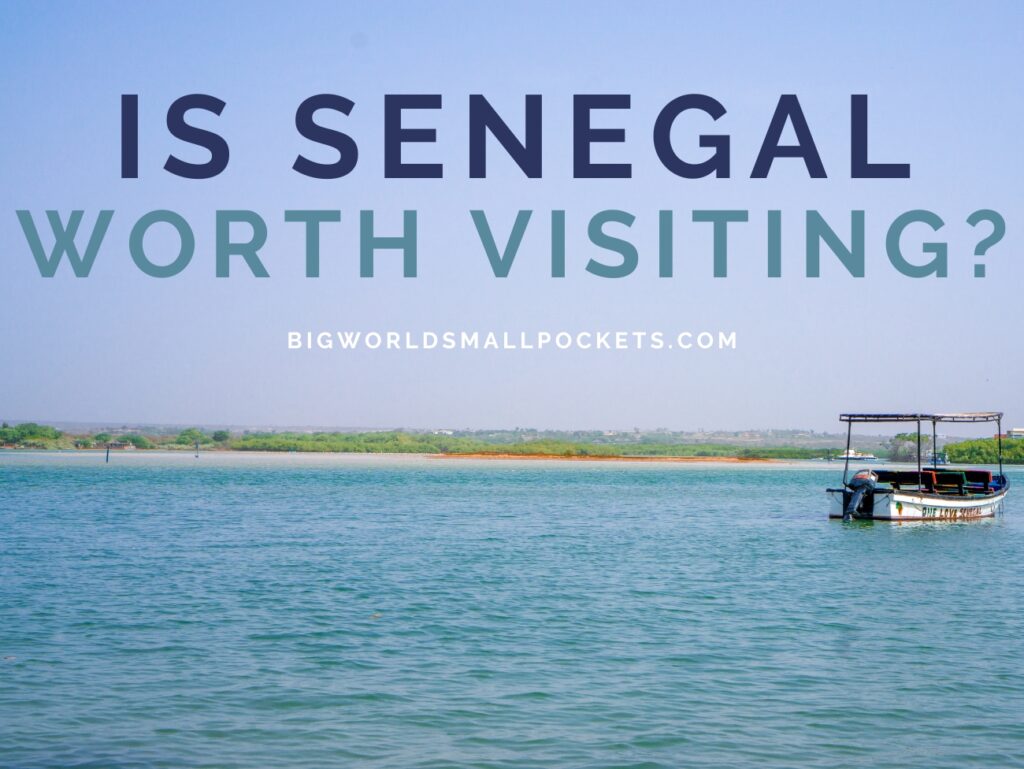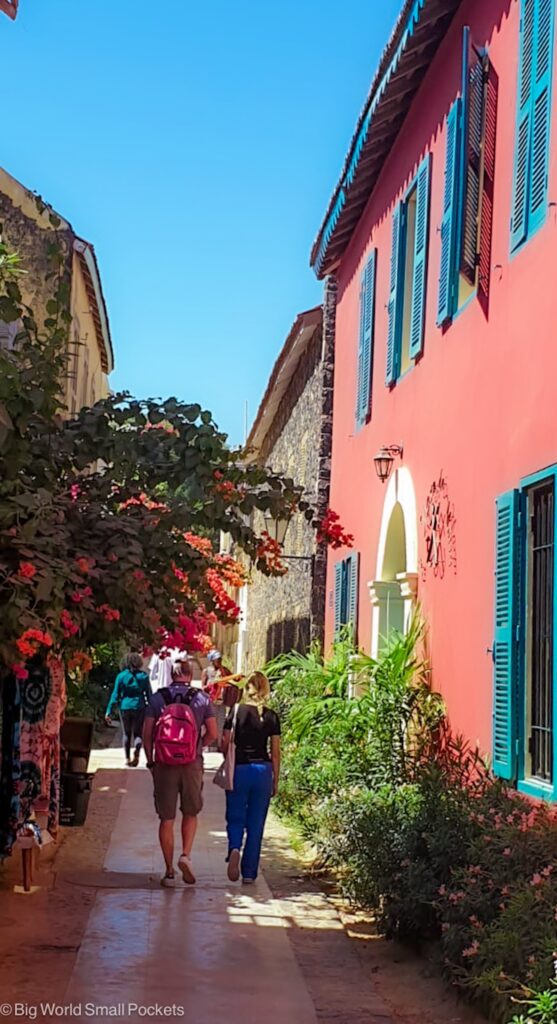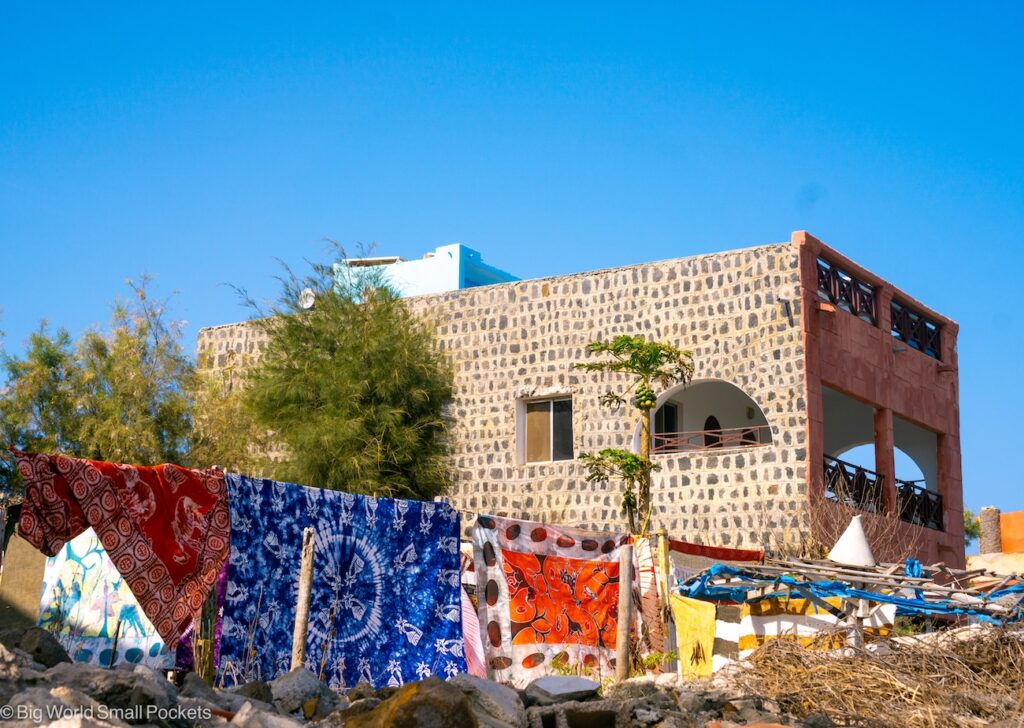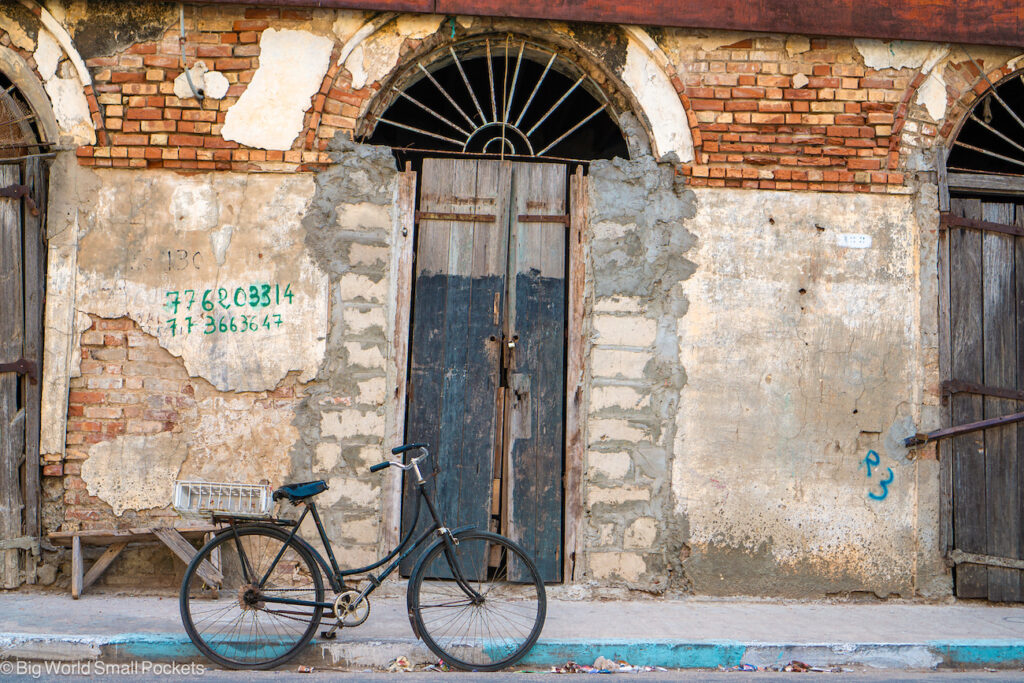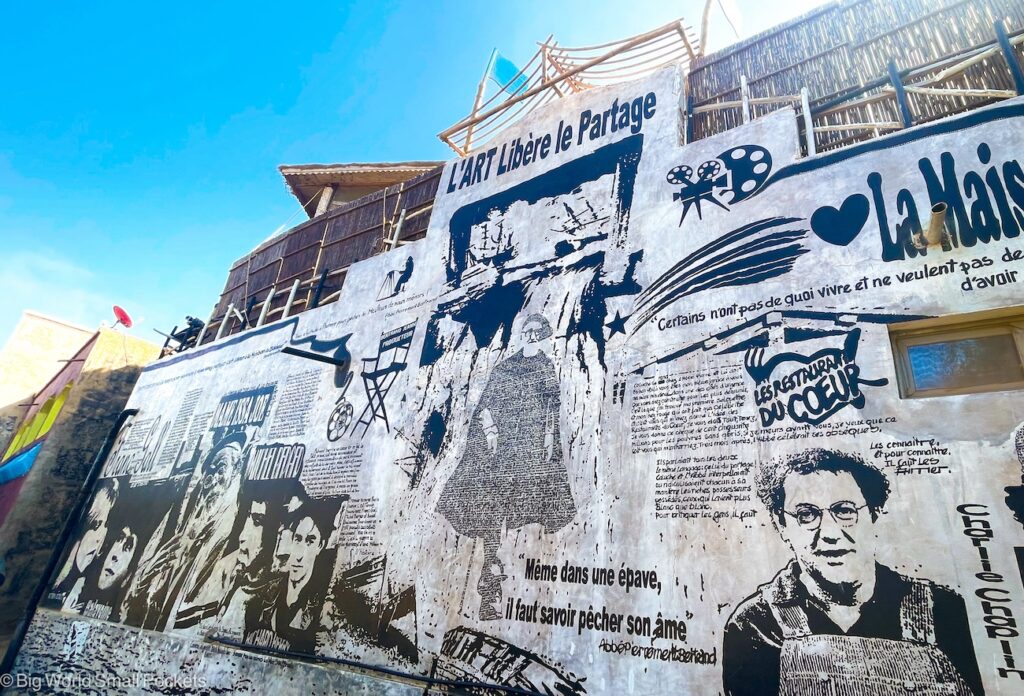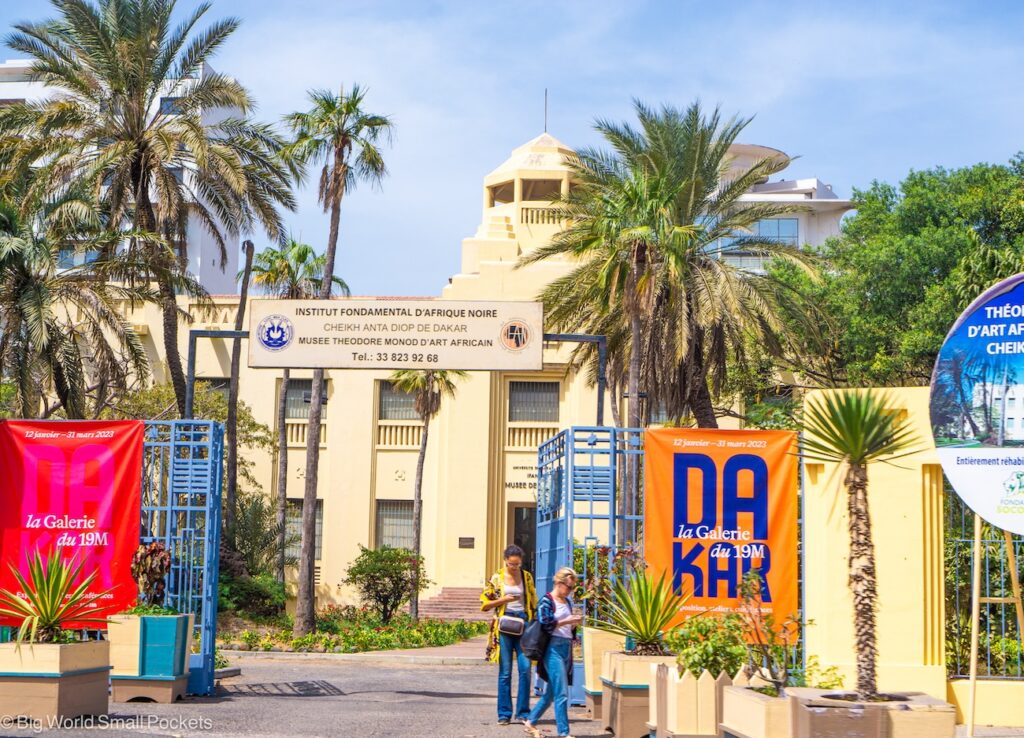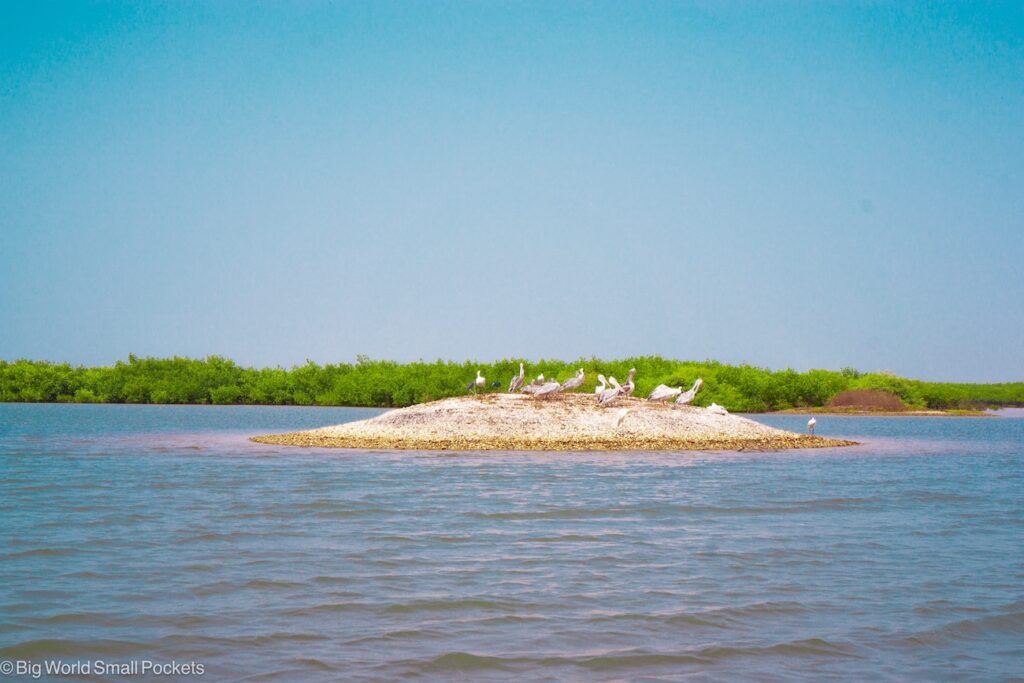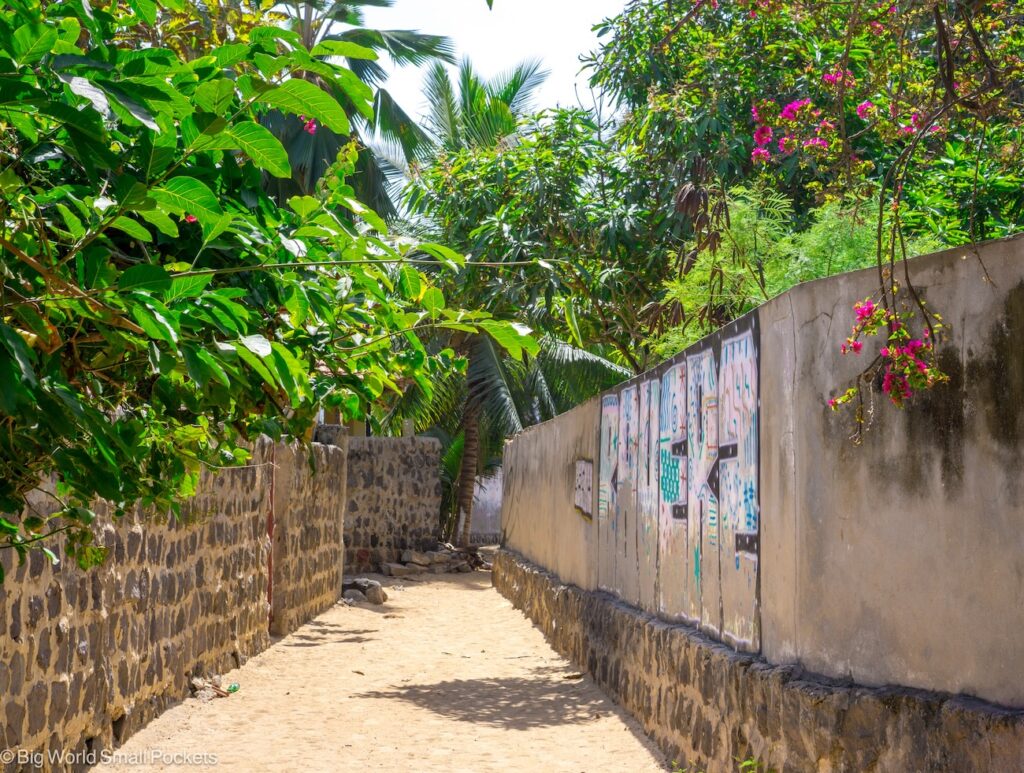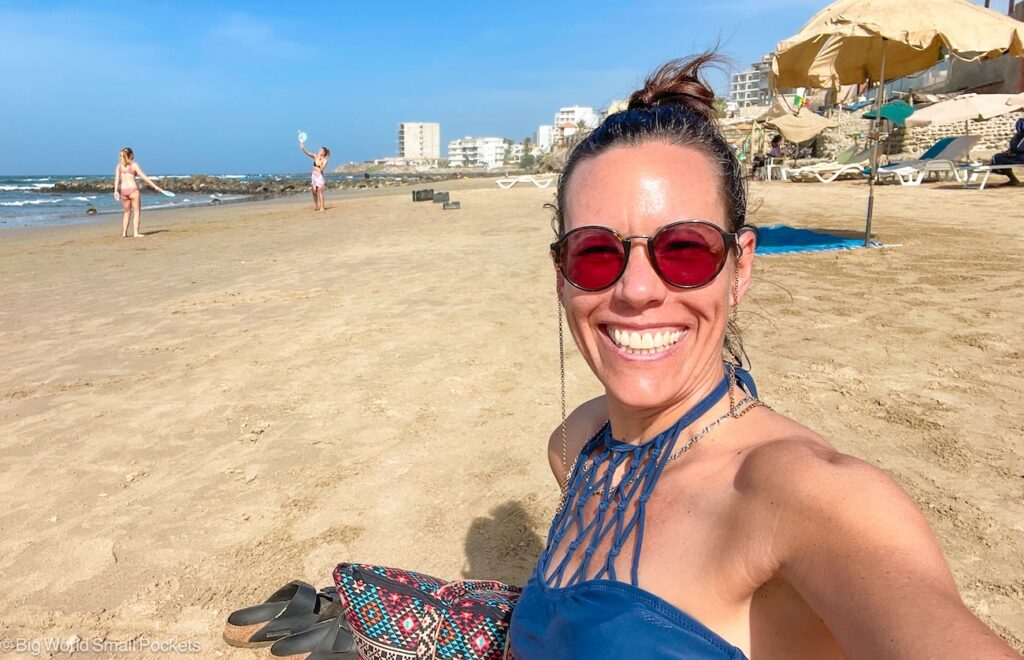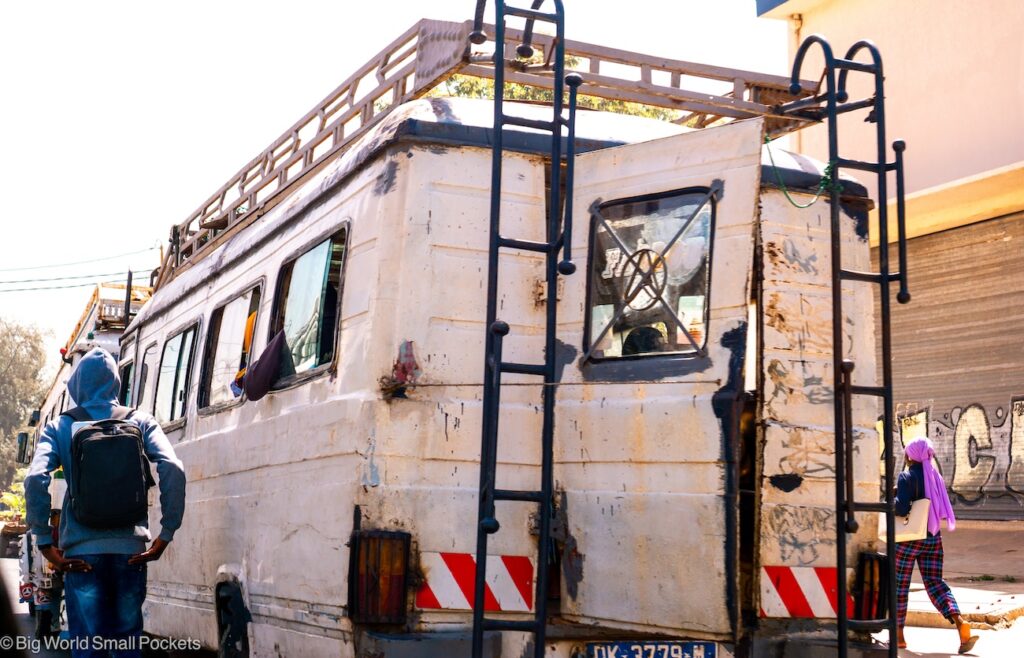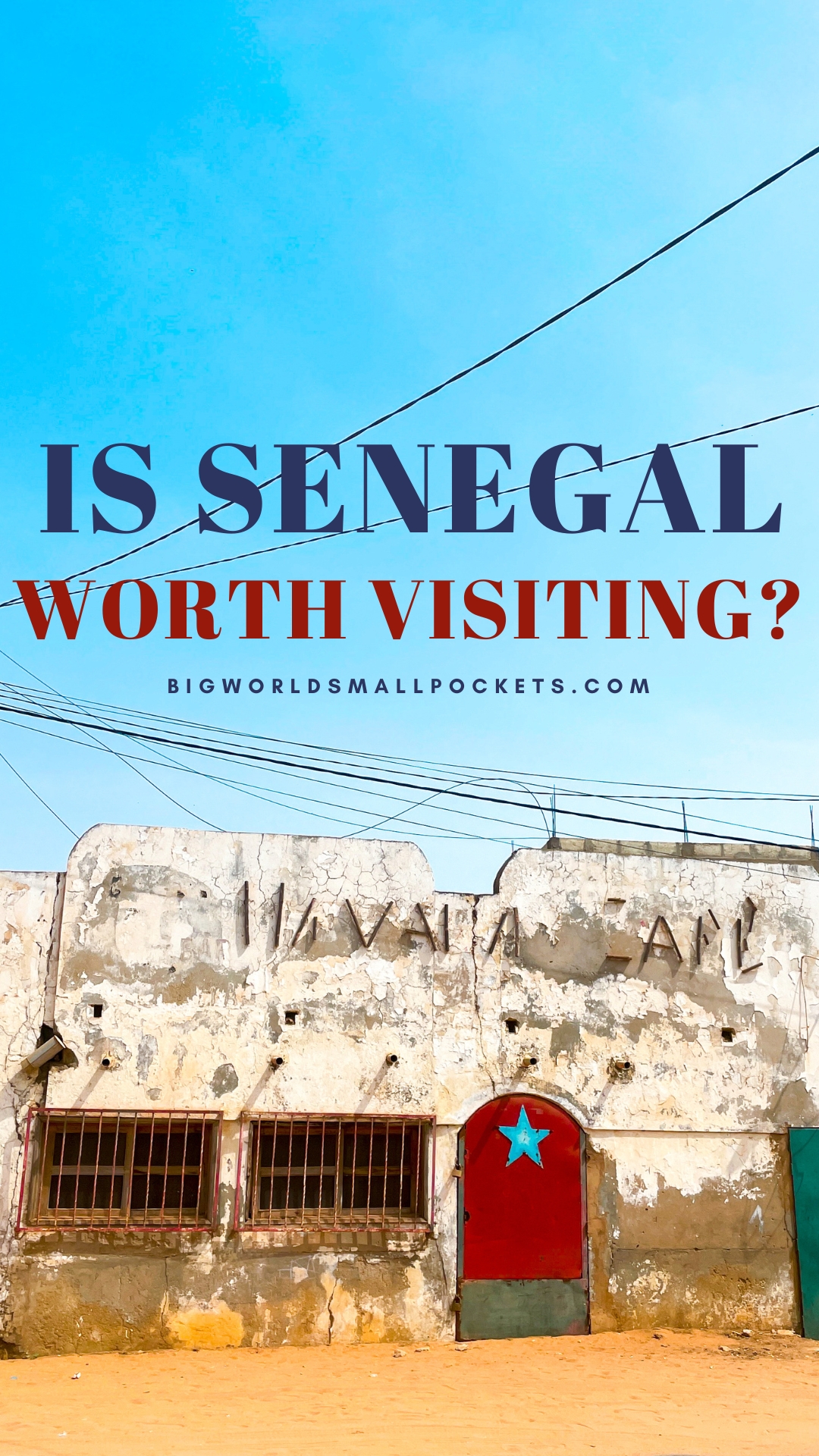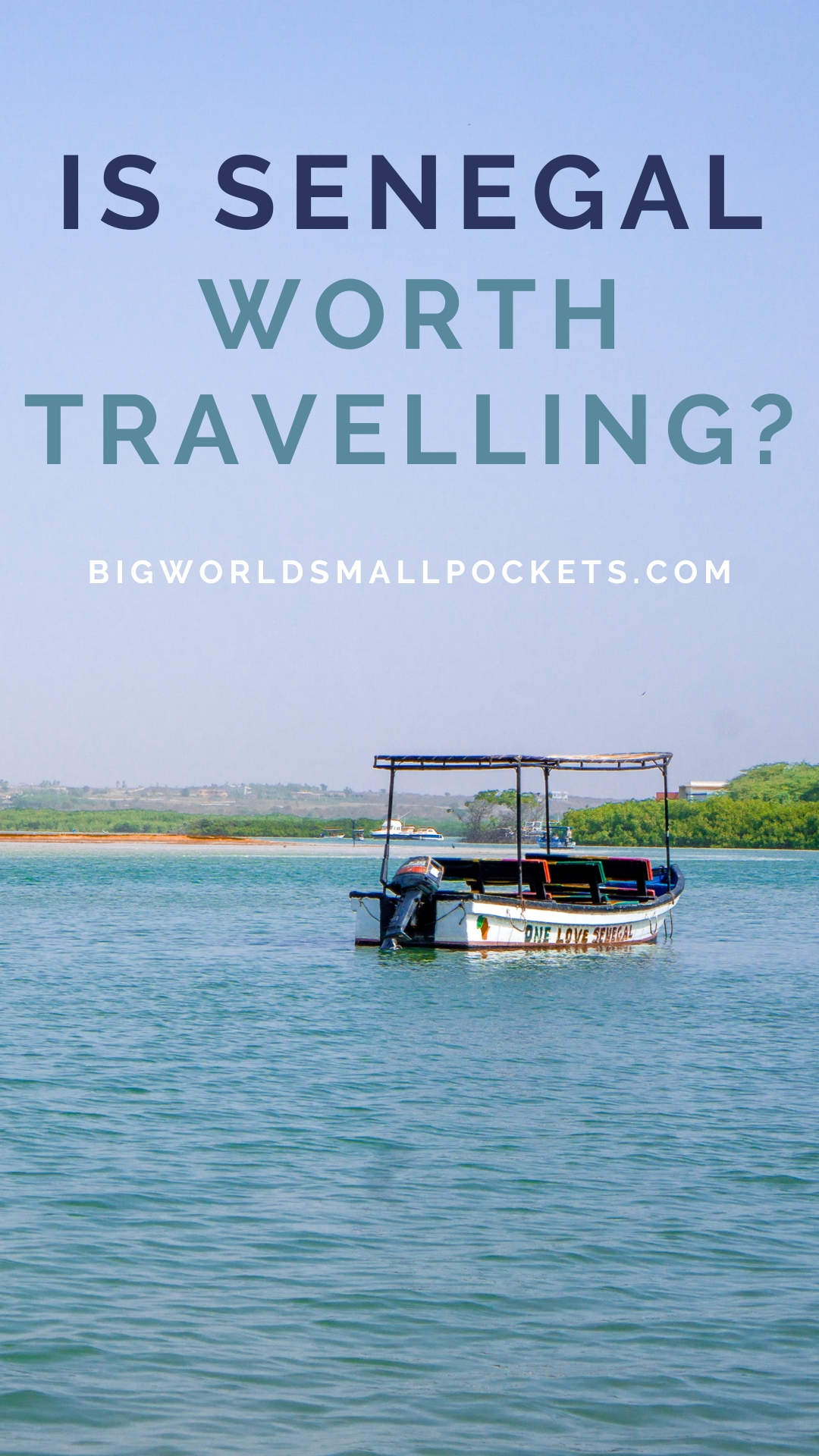To be honest, whether Senegal is worth visiting really depends on the sort of trip you are looking for…
After all, West Africa is not for the faint-hearted!
Despite having visited over 20 countries across the African continent, many of them as a solo female traveller, there’s no question that I found those in West Africa to be in a league of their own!
Political corruption, poverty and lack of tourist infrastructure here mean travel in this region is both acutely rare and real… but don’t fear, it’s also incredibly insightful, powerful and rewarding too.
In fact, some of the most significant travel moments I’ve had have been in this region, as West Africa truly allowed me to grasp the privilege and freedom I have as a westerner,
And Senegal is no exception.
But it’s not just the experience of being a traveller here that is eye opening, it’s also the country’s natural beauty as well as its cultural vibrance.
Indeed from UNESCO sites to stunning coastal regions, a buzzing youthful ambience to charming and quaint islands, for those who aren’t afraid to dive in, Senegal is a total travel treat!
So here’s my guide as to whether it’s worth visiting Senegal based on my experience of travelling there as a solo female…
Related Posts
- Ultimate Senegal Itinerary: 7 Days
- 10 Things to Know about Backpacking Senegal inc Safety Tips
- Your Complete Packing List for Senegal
Reasons to Go to Senegal: An Overview
Located just to the south of Mauritania, on the edge of the Sahara, Senegal is a diverse country that is widely acknowledged as the most stable in the West Africa region.
Largely dry and arid, with an Islamic majority population, there are many elements of Senegal that bear similarities to travelling in North African countries such as Morocco and Egypt.
However Senegal has far fewer tourists than these destinations, which means if you’re looking to get off the beaten track, it’s certainly a great choice!
Indeed I met a grand total of one other independent traveller when I was there, and that was during the so-called high season, so do be prepared to spend quite a bit of time by yourself if you’re travelling here alone.
Another great reason to visit Senegal is that it’s quite close to Europe (in relative terms) and has direct connections to many major European cities, making it one of the more accessible countries in West Africa to visit.
This is enhanced by the fact that many European passport holders don’t need a visa to visit Senegal either, increasing its appeal.
The country’s official language is French – so visiting Senegal is also a good chance to either practise or implement your French skills depending on where you’re at with them!
And finally, Senegal is also a warm winter country, which means if you’re looking for some heat and sunshine during the month of November through March, it’s a great choice.
On top of this Senegal also has several stand out locations and travel big hitters, which i’ll go into below…
@bigworldsmallpockets Top Things to Do in Senegal 🇸🇳 One of the safest and easiest destinations to visit in West Africa, could it be time to add Senegal to your list? I travelled here as a solo female and loved the laidback and fairly hassle-free ease of it all. Plus it was a good chance to practise my French! If you’re heading to Senegal, here’s my list of the top 6 things to do there! 1️⃣ Take in the chaos of capital Dakar 2️⃣ Escape to islands of N’Gor or Goree 3️⃣ Discover the crumbling charm of UNESCO-listed St Louis 4️⃣ Cruise through the mangroves of Lake Somone 5️⃣ Enjoy the tropical paradise of the Casamance region 6️⃣ Cram yourself into a sept-place and travel Senegal the local way #visitsenegal #senegal #senegaltravel #senegaltrip #westafricatravel #westafricatrip #senegaltourism #travelwestafrica #travelsenegal #femaletravelbloggers #solofemaletraveler #solofemaletravel #uktravelblogger #dametraveller #solotravel #africatrip #travelafrica #africatravel #africaamazing #africaadventure ♬ original sound – Big World Small Pockets
Senegal’s UNESCO World Heritage Site
The plethora of UNESCO sites across this country are another great reason why Senegal is worth visiting.
In fact, there’s an impressive 7 sites on the World Heritage List at the moment in this country, and an impressive 8 on the tentative list – not bad for a nation of Senegal’s size and economic clout.
To give you some frame of reference, tourism giants Egypt in North Africa and Tanzania in East Africa also have 7 UNESCO World Heritage Sites each, putting them on a par.
On the list of Senegal’s 7 UNESCO spots are:
- Gorée Island
- Island of St. Louis
- Bassari Country
- Djoudj National Bird Sanctuary
- Niokolo-Koba National Park
- Saloum Delta
- Stone Circles of Senegambia
The important historical, cultural and natural experiences these places have showcase the depth and breadth of travel in Senegal and why visiting this country is so worthwhile it in my opinion.
Senegal’s Islands
Just outside of Dakar, and the first UNESCO site listed in Senegal, the small island of Goree is a must-visit while you are in this country due to its important historical narrative – it was once the largest slave-trading centre on the African coast.
Day trips from the capital to Goree are a top thing to do in Dakar, as you’ll learn stories of the African Slave Trade that took place here, as well as admire the somewhat juxtaposed colourful buildings and cute bougainvillea-laden streets.
A tour guide can be a great way to understand more about Goree Island and its significance, including its legacy across the country and West Africa.
Another island that makes Senegal worth visiting is that of Saint Louis, which is located further north in the country – right near the Mauritania border.
Once the former capital, you can get to St. Louis in a few hours from Dakar using public transportation – I recommend the Dem Dikk bus.
Also an important part of the Aero-Postale Atlantic trade, Saint Louis is another must-visit spot during your time in Senegal – in fact, I’d list it as one of the best places to go in West Africa even.
From the crumbling walls of its colonial architecture that contain century old stories, to fascinating museums, quirky cafes and small local galleries, 2 days here is a great amount of time to get a feel for this atmospheric place.
You can learn all about it, including how to get there and where to stay, in this complete guide I wrote to Saint Louis.
And finally, the last island you definitely need to visit in Senegal is N’Gor.
Not UNESCO-listed and less popular a day trip than Goree, this is tiny island near Dakar id another one check out while you’re in the capital.
Again accessible from the shores of Dakar by boat, you can quickly sail to this island in 20 minutes and once you get there, enjoy the laidback, sandy beach culture, the cute restaurants and the fab artworks and crafts produced here.
Winding alleys lead you round the main settlement and thrust you out into wide open Atlantic vistas, before you find a lounger back on the sand for a spot of lunch and a cool drink.
Dakar
So while these islands certainly are great reasons to visit the capital city of Senegal, Dakar is worth a least a day of sightseeing time too.
A large sprawling capital, there are many different parts to this city, so it pays to do your research in advance about where is worth visiting and where isn’t.
The centre of the city boasts the state’s key national buildings and monuments, including Independence Square, the IFAN Museum of African Arts, the African Renaissance Monument, the Grand Mosque and the National Theatre.
The famous market Marché Sandaga, the oldest and largest in the country, is also here, but can be pretty overwhelming to say the least!
It’s a really good idea to take a guide, because it can be a pretty full-on experience!
While Dakar’s centre is worth a half day of your itinerary in my opinion, what really makes Senegal’s capital worth a stop is its youthful, vibrant culture.
Being in this city, you’ll immediately sense a progressive and exciting artistic movement, be that from young designers to talented musicians, which means Dakar really feels like a city at the beating heart of things in the region.
Going out at night is the best way to get amongst it and from clubs and bars to top restaurants, you’ll quickly get a glimpse of how life rolls here among the urban middle class.
Mbalax – a local and wildly popular music style – provides much of the fun and there’s no question its exciting and emerging culture is a huge region to visit Senegal.
Recommended for travellers looking for nightlife in Dakar are the Viking Bar, Texas Club and international eateries La Pampa Grill and DakyTori.
And best areas for tourist-friendly accommodation, cafes and vibes in Dakar are the more-heeled districts, including Almadies, Point E (where I was based) and Yoff.
Many expats live in these districts too and so there’s services that cater to them as well.
National Parks and Bird Sanctuary
As you’ll have noticed from the UNESCO list above, there’s several acclaimed national parks in Senegal that also make this country worth visiting.
Most famous is the Djoudj National Bird Sanctuary, which can be reached as part of a day trip from Saint Louis.
Usually this is organised as part of a tour that can be arranged through your accommodation in Saint Louis. Transport and a guide are normally included.
Home to some 1.5 million birds, the huge wetland of Djoudj National Bird Sanctuary is situated in the Senegal River Delta, where the ponds, streams and backwaters are home to many wonderful species including white pelican, the purple heron, the African spoonbill, the great egret and the cormorant.
Many of the birds here are migratory, which means when it’s northern hemisphere winter, the birds flock here for the warmer weather.
This is definitely the best time to visit.
For ornithologists, this sanctuary, in particular, is a key reason to put Senegal on your travel list.
Le Lac Rose / The Pink Lake
And another great natural phenomena that makes Senegal worth visiting is Le Lac Rose, or the Pink Lake.
Situated just 35km up the coast of Dakar, along the Atlantic Ocean, you can either take a day trip here, or perhaps best, head out and enjoy one of the nearby guesthouses for the night.
And that’s because this pink lake has to be seen to be believed!
Created by a type of algae that transforms the colour of the water here bright pink, this body of water is also known for its high salt content – up to 40% in some areas!
Best visited during the high season from January to March, just do check the colour of the lake before you go, as flooding in the past has known to leach the colour from the lake, which sadly decreases its spectacle.
Nevertheless, you can still swim in the Lake (the algae is harmless to humans) and see local salt farmers collecting this precious substance too.
To avoid any confusion, it’s also worth noting the lake’s official name is Lake Retba, so you might need to use this name when searching this spot out locally.
Casamance
And another amazing natural area in Senegal that is absolutely worth visiting is the Casamance region.
Sadly, I didn’t actually get to go to this part of the country on my visit to Senegal, because it’s so far away, but I’m absolutely planning to head there next time (and you should too!)
Situated below the country of the Gambia, Casamance is actually some 400km south of Dakar and has a totally different climate and feel as a result.
Long gone are the arid, dry days of the Sahara, here in the Casamance there’s an altogether more tropical-feeling environment – think lush greenery and humid with plenty of rain!
With some of the most beautiful beaches in West Africa however, especially around Cap Skirring, you can enjoy white sand relaxation, as well as local fish markets and some amazing boat rides when you’re here.
Things to Know Before Travelling to Senegal
Before I headed to Senegal, I had travelled extensively through Southern, East and North Africa, which I definitely recommend doing as a pre-cursor to West Africa!
After all, it pays to remember travel in a West African nation is not for the amateur independent traveller!
Countries in this region have far fewer tourists, a much lower level of infrastructure and are often more unstable politically too.
As I mentioned earlier, Senegal is renowned for the being the most politically stable and economically developed in the region, but it still has its challenges.
It’s absolutely worth bearing this in mind before you travel there (especially as a solo female) and to plan accordingly.
When it comes to planning, I highly recommend booking accommodation your first few nights stay in Senegal in advance.
This is likely to be in Dakar, there the Nyéléni Maison Sahel and La Villa 126 are 2 good accommodation option.
Dakar airport is situated almost 50km from the city centreI, so I also recommend you book a taxi to pick you up from the airport and take you to your hotel – preferably you’ll want to organise this through your accommodation, so you don’t get ripped off.
Remember to have some USD or EUR cash you can change at the airport to pay for things (like an airport taxi ride) right away.
Please make sure you check the visa situation in Senegal (relevant to your particular passport) before you arrive too.
Polishing up on your French is a good idea before you head to Senegal as well, as is making sure you have an eSIM installed that you can activate right away on landing.
Having data will not only allow you to check in with those at home, but also use Google maps and Google translate – both things you’re likely to use a lot when travelling in Senegal.
eSIMs really are the way forward (they are much easier than trying to buy a SIM card in the country – as I found out the hard way!) and my go-to when travelling is aloSIM.
Also remember to pack with a conservative dress code in mind in this Islamic-majority country and to bring a filter water bottle with you, so you can drink the tap water safely.
Having a small first aid kit with you is also a good idea, as food in Senegal might not be up to the standards you have enjoyed elsewhere in the world.
And you’ll also want to ensure you’re up to date with your regular travel vaccines.
Consider getting a Yellow Fever certificate if you haven’t already – this can be useful for travelling more widely in the West Africa region too.
Just enter your details below and I'll email it you - simple!
Information will be sent to the email provided above
Mini Travel Guide to Senegal
When to Visit Senegal?
The best time to visit Senegal is the cooler season which runs from December through March.
This is also the dry season in the Casamance region.
I’d avoid rainy season, when things get stifling hot and humid.
Learn more in this post I wrote all about when you should travel to Senegal.
How to Get to Senegal?
Flights into Blaise Diagne International Airport regularly arrive from across Europe (especially France) and the West African region.
As always, I use Skyscanner to find the best deals.
How Long to Spend in Senegal?
I recommend spending 7 days visiting this country.
Allow another week if you’d like to visit the Casamance region and explore it well.
Recommended Tours for Senegal?
If you’re keen to travel to Senegal with a tour, check out these fab options.
Top 5 Packing Items for Senegal
Loose hareem pants Lightweight crossbody bag UV Sunglasses 30+ SPF Face SunscreenCheck out my complete packing guide for the Senegal here.
Travel Insurance
World Nomads offers simple and flexible travel insurance. Buy at home or while travelling and claim online from anywhere in the world.
Alternatively, if you’re a long-term traveller, digital nomad or frequent remote worker seeking travel health cover, check out Safetywing’s Nomad Insurance policies.
Travel Money
The currency in Senegal in the Senegalese France (cfa).
The easy way to spend abroad with real exchange rates, no markups, no sneaky transaction fees and free ATM withdrawals, I always use my Wise card.
Working just like a debit card, and linking easily with Google and Apple pay, grab your Wise card here.
It probably also pays to bring a credit card with you to Senegal too – especially if you want to hire a car.
PIN IT TO PINTEREST!
I hope I’ve shown you that Senegal is definitely worth visiting and that it really does present the opportunity for a unique and memorable West African journey.
Still have questions about travelling in this country?
Don’t hesitate to drop them into the comments box below and I’ll get back to you…
This page contains affiliate links meaning Big World Small Pockets may receive a small commission on any purchases at no extra cost to you.

